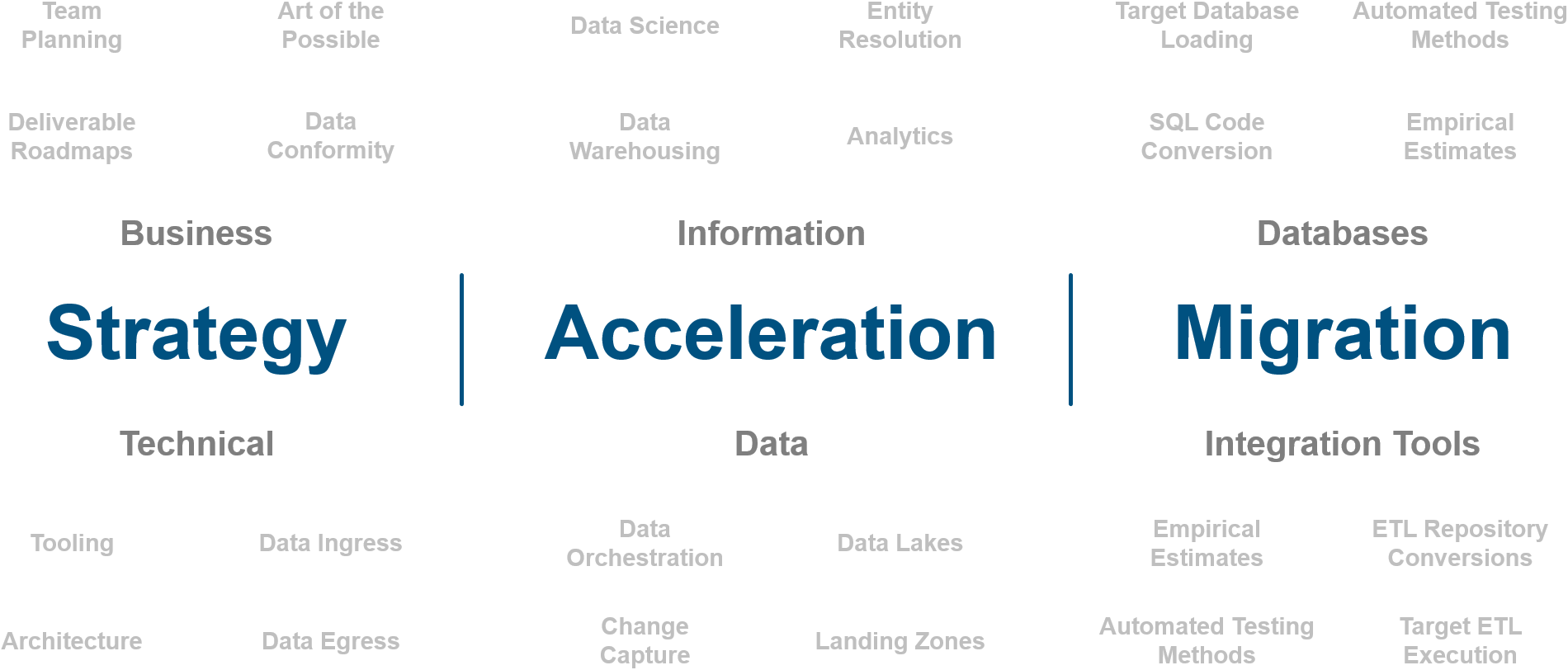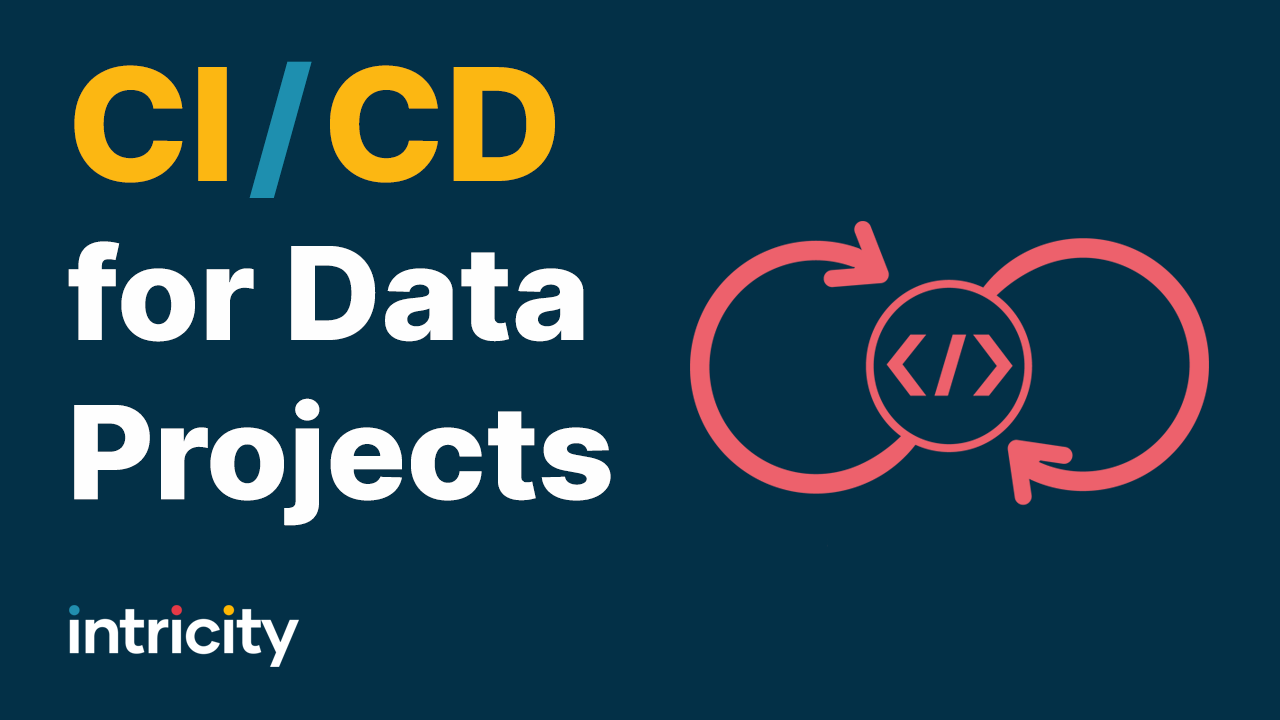
CI/CD for Data Projects
Written by Jared Hillam
CI/CD in a Nutshell
Continuous Integration (CI) and Continuous Delivery (CD) are two important practices in the field of software development that help streamline the development process and improve the quality of the end product. These methodologies have become increasingly popular in the IT space due to their numerous benefits.
The primary goal of CI/CD is to ensure that the code being developed by individual developers can be seamlessly integrated with the larger codebase that other developers are working on. This helps to avoid potential conflicts and issues that may arise when merging code changes later in the development process.
Continuous Integration is the practice of regularly integrating code changes into a shared repository, such as a version control system like Git. This allows developers to detect and resolve any issues or conflicts early in the development process, leading to a more stable codebase. CI also involves automating the build process and running automated tests to ensure that the code changes do not break the existing functionality.
Continuous Delivery, on the other hand, is the practice of ensuring that the code is always in a deployable state. This means that the code is automatically tested and validated for quality and reliability, and can be released to production at any time. CD helps to reduce the time and effort required to deploy new features and bug fixes, and also minimizes the risk of introducing new issues into the production environment.
The combination of CI/CD helps to improve the overall efficiency of the software development process, as it reduces the time and effort required to integrate and deploy code changes. This, in turn, leads to faster release cycles and improved quality of the end product.
Data Projects
The concept of integrating developers and their code changes regularly has been around for several decades, but it was formally introduced in the late 2000s with the publication of the book "Continuous Delivery." Since then, CI/CD has become a standard practice in software development, as it helps to improve the speed, quality, and reliability of the development process. However, the adoption of CI/CD methodologies in data management projects has been slower compared to software development. This can be attributed to the unique challenges and differences between the two domains.
Data management projects often involve large bulk motions of data, as opposed to the tight iterations and incremental changes in software development. This can make it more difficult to apply the principles of CI/CD to data management projects. Additionally, data management projects may struggle to get their audiences to see query logic as a strategic asset, which can hinder the adoption of CI/CD practices.
Despite the perceived cultural mismatch, the potential benefits of these practices should not be disregarded. Indeed, any strategic data initiative should mandate the use of a CI/CD framework. The very presence of code management automation that comes with CI/CD is more than enough justification for its adoption within a data management team. By incorporating CI/CD, organizations can streamline their data management processes, enhance collaboration among team members, and ensure that the code is always in a deployable state.
Things to Consider
In this whitepaper, we will discuss the key practices that every data management team should consider when incorporating a CI/CD process during development:
Establishing a Data Management Strategy:
A solid data management strategy is the foundation for a successful CI/CD implementation. This strategy should outline how data is managed, processed, and integrated with business functions. By defining these processes, organizations can ensure that their data pipelines align with their business objectives and can be treated as a strategic asset.
Understanding Downstream Impacts:
When making changes to data projects, it's essential to be aware of the potential downstream impacts. To minimize the risk of unintended consequences, data management teams should maintain a data catalog or have conversations about the potential impacts of changes. Additionally, implementing testing mechanisms to validate the outcome of changes can help ensure that data pipelines remain stable and reliable.
Implementing Workflow Automation:
Leveraging tools like GitHub Actions, data management teams can automate the promotion of code and data through the CI/CD pipeline. By setting up jobs to test various scenarios, organizations can gatekeep the promotion of bad code and data, ensuring a consistent and reliable process.
Automating Data Testing Rules:
Integrating automated data testing rules into the promotion process can help maintain data quality and integrity. For example, simple tests can be implemented to check for null values in columns, ensuring that data pipelines are not disrupted by missing or incomplete data.
Maintaining Consistent Environments:
Ensuring consistent environments between development, quality assurance, and production is crucial for a smooth promotion process. Organizations must avoid letting these environments fall out of sync, as this can lead to complications when promoting code and enabling automation.
Breaking Code into Smaller, Modular Components:
Modularizing code allows data management teams to modernize aspects of their data pipelines without disrupting the entire system. By breaking the body of code into smaller, manageable components, organizations can maintain a flexible and adaptable data management infrastructure.
Despite Resistance
While CICD adoption was often resisted by data management teams, the development culture within organizations has begun to shift. This is especially true for large strategic initiatives. This is showing positive results such as:
- Improved efficiency: CICD practices have helped to automate the build, testing, and deployment of data pipelines, reducing the time and effort required to integrate and deploy changes.
- Enhanced collaboration: By using version control systems and automated testing, data management teams can collaborate more effectively and reduce the risk of conflicts during the development process.
- Better data quality: Automated testing and data validation rules help to maintain the quality and integrity of data pipelines, ensuring that downstream systems receive accurate and reliable data.
- Faster release cycles: The ability to quickly and consistently deploy changes to production environments allows data management teams to respond to business needs more rapidly and maintain a competitive edge.
- Increased stability: By following best practices such as modularizing code and maintaining consistent environments, data management teams can ensure that their data pipelines are stable and less prone to unexpected issues.
Who is Intricity?
Intricity is a specialized selection of over 100 Data Management Professionals, with offices located across the USA and Headquarters in New York City. Our team of experts has implemented in a variety of Industries including, Healthcare, Insurance, Manufacturing, Financial Services, Media, Pharmaceutical, Retail, and others. Intricity is uniquely positioned as a partner to the business that deeply understands what makes the data tick. This joint knowledge and acumen has positioned Intricity to beat out its Big 4 competitors time and time again. Intricity’s area of expertise spans the entirety of the information lifecycle. This means when you’re problem involves data; Intricity will be a trusted partner. Intricity's services cover a broad range of data-to-information engineering needs:
What Makes Intricity Different?
While Intricity conducts highly intricate and complex data management projects, Intricity is first a foremost a Business User Centric consulting company. Our internal slogan is to Simplify Complexity. This means that we take complex data management challenges and not only make them understandable to the business but also make them easier to operate. Intricity does this through using tools and techniques that are familiar to business people but adapted for IT content.
Thought Leadership
Intricity authors a highly sought after Data Management Video Series targeted towards Business Stakeholders at https://www.intricity.com/videos. These videos are used in universities across the world. Here is a small set of universities leveraging Intricity’s videos as a teaching tool:

Talk With a Specialist
If you would like to talk with an Intricity Specialist about your particular scenario, don’t hesitate to reach out to us. You can write us an email: specialist@intricity.com
(C) 2023 by Intricity, LLC
This content is the sole property of Intricity LLC. No reproduction can be made without Intricity's explicit consent.
Intricity, LLC. 244 Fifth Avenue Suite 2026 New York, NY 10001
Phone: 212.461.1100 • Fax: 212.461.1110 • Website: www.intricity.com

Sample@gmail.com appears invalid. We can send you a quick validation email to confirm it's yours

